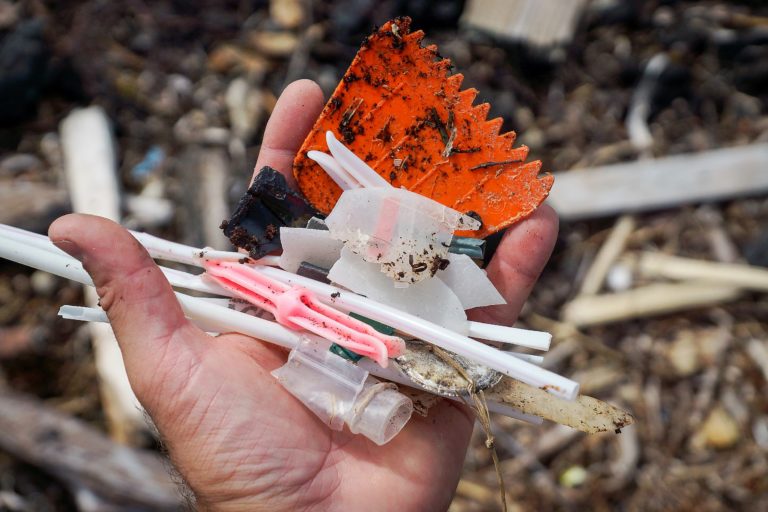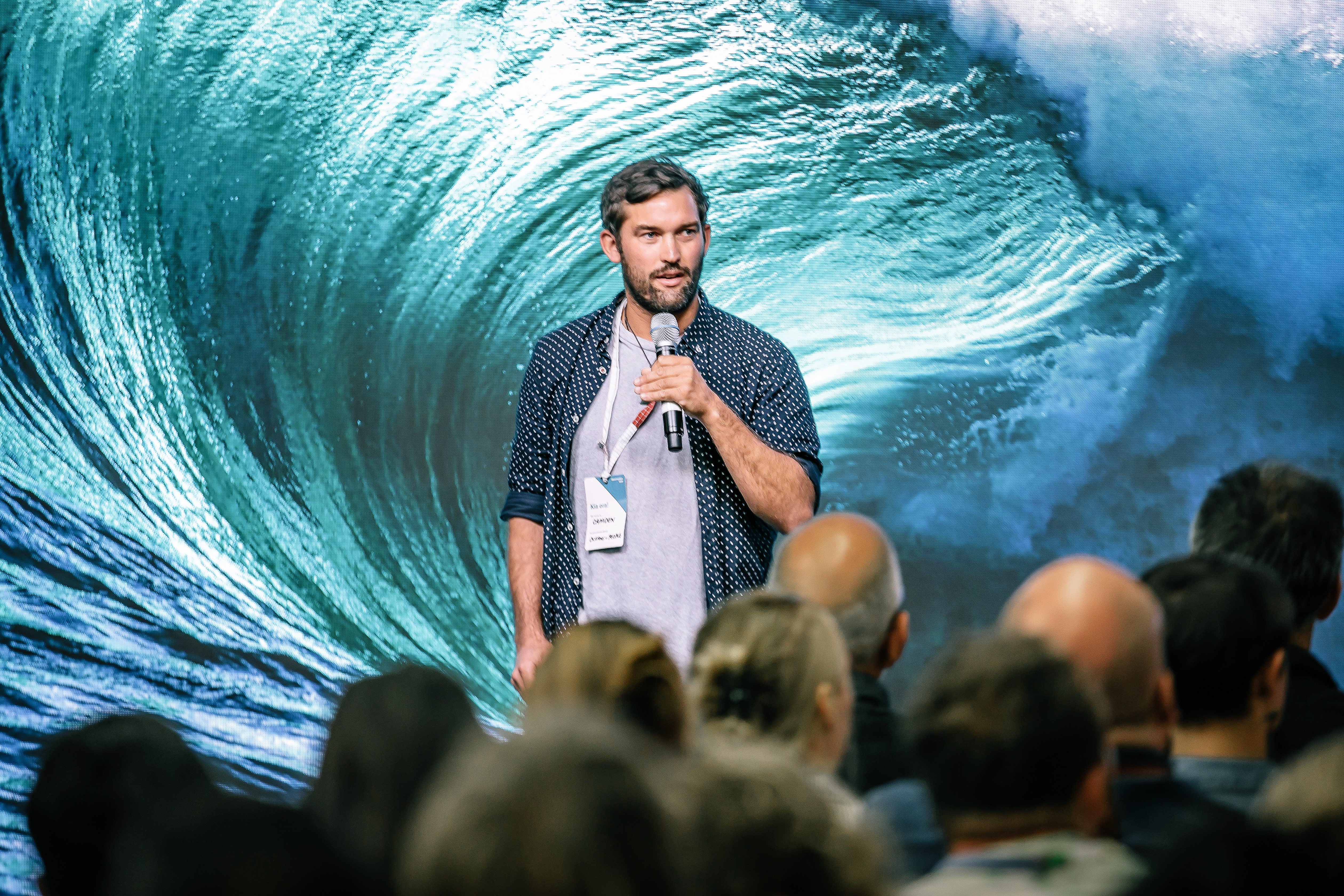Artificial intelligence takes on ocean trash: Cleaning up the world’s beaches with the help of data
- среда, 1 мая 2019 г. в 00:14:27
Inspiration sometimes arrives in strange ways. Here is the story of how a dirty disposable diaper led to the development of an artificial intelligence (AI) solution to help rid the world’s coasts of massive amounts of waste and garbage.

It starts in 2005: Camden Howitt is surfing off Puerto Escondido on Mexico’s wild west coast when, suddenly, a floating diaper smacks him in the face. He paddles back to shore in disgust, only to stumble upon a discarded toilet seat lying on the sand.
When Howitt returns home to New Zealand half a world away, his heart sinks when he sees how much trash and other refuse is also washing up on its geographically isolated, and once pristine, 15,000-kilometer (9,300-mile) coastline.
Many people might merely shrug at such a seemingly intractable global problem and see it as just too hard to fix. But not Howitt. His mission became clear: He would dedicate his life to protecting paradise.
 Camden Howitt, Co-Founder of Sustainable Coastlines.
Camden Howitt, Co-Founder of Sustainable Coastlines.Co-Founder Sam Judd came up with the idea of forming a non-profit organization while surfing in the Galápagos Islands in 2008. A year later, the two created Sustainable Coastlines in New Zealand to educate, motivate, and empower individuals and communities to clean up and restore their coastal environments and waterways.
It was the start of an obsession, and one that has just attracted a grant from AI for Earth: Microsoft’s US$50 million, five-year commitment to put AI in the hands of those working to protect our planet across four key areas – agriculture, biodiversity, climate change, and water.

“This kind of initiative is exactly what our planet needs – something simple, but effective, that can easily be adopted at grass-roots level to make a difference, empowering every community to keep their environment clean and make the world a better place for future generations,” Microsoft President Brad Smith said on visit to New Zealand in March.
At Lyall Bay, near the capital Wellington, Smith braved a blustery day to see the organization’s litter-busting technology in action. He helped collect garbage from the beach, then logged and categorized it in the Sustainable Coastlines’ uniquely comprehensive database.
Since it started, Sustainable Coastlines and its growing legions of volunteers have removed enough trash from shorelines around New Zealand and the Pacific to fill the equivalent of nearly 45 shipping containers. They have picked up tens of millions of individual items, 77% of which are single-use plastic.
It’s an impressive achievement, but the problem of ocean garbage is getting worse and is a global scourge that has no boundaries. Howitt ’s vision now is “to combine my deep love for the outdoors with a passion for designing systemic tools for large-scale change.” To get there, Sustainable Coastlines has teamed up with Microsoft and its innovative technology partner, Enlighten Designs.
To find out more, I recently visited Sustainable Coastlines’ headquarters in the nation’s most populous city, Auckland.

Howitt looks more or less how you might expect a passionate, ocean-loving environmentalist to look. His beard is long and rugged, his tan is deep, and his determination is strong. Before long he is proudly showing me around the building, The Flagship Education Center, which was opened by New Zealand Prime Minister Jacinda Ardern in October last year.
His organization is determined to be sustainable in practice as well as in name. The building captures and recycles its own water. Membrane roofing both insulates and breaks down airborne pollutants into non-toxic by-products. All gray and black water is treated and composted on site. Its offices are powered by state-of-the-art solar panels and batteries that contribute excess power to the city’s standard electricity grid.
Later, Howitt opens up about the scale of the environmental challenges and myths confronting his homeland of long beaches and hundreds of islands at the western edge of the South Pacific. Over the years, a carefully constructed clean-and-green brand has made foreign tourism a massive money-spinner for New Zealand’s economy. And, many Kiwis honestly regard themselves as “tidy” citizens.
Yet the World Bank ranks New Zealand as the planet’s tenth-largest per capita producer of urban waste, well ahead of the United States at 19th. “That’s a top ten that no one wants to be in,” Howitt says. “As New Zealand’s population rockets and we consume like there’s no tomorrow, we could easily rise in that ranking.”
He hopes new technologies and solutions can help reverse this disturbing trend.
Enlighten Designs has built a platform that employs intelligent digital storytelling and visualization tools as part of Microsoft’s Cognitive Services suite. And, together with Microsoft, it is also developing a national litter database that will not only track the impact of clean-up efforts on waste but also generate accurate, scientifically valid data and insights.
This kind of initiative is exactly what our planet needs – something simple, but effective, that can easily be adopted at grass-roots level to make a difference …
Howitt believes this will guide and help local communities of “citizen scientists.” With solid scientific data they will, with help from AI, be able to determine the sources, causes, and solutions to their local problems.
“We can’t improve what we do not measure. Our charity has been collecting data on this for 10 years. This is a new, scaled-up, scientific approach, focused on working closely with communities around the country,” he says.
Damon Kelly, Enlighten Designs CEO, says, “This tool is the first of its kind in New Zealand. It uses Microsoft’s Cognitive Services, coupled with United Nations Environment Program (UNEP) methodology, to help communities around the country capture and categorize what litter is on our beaches.”
Microsoft New Zealand’s National Technology Officer, Russell Craig, describes the initiative as: “A fantastic example of how our Cognitive Services suite is being used for good – in this case, delivering large-scale, grassroots solutions to our growing litter problem in New Zealand.
“We are only limited by our imagination. If we can get an army of volunteers capturing the data, then we are in a strong situation to determine where to best place our efforts.”
 Volunteer Citizen Scientists at work, monitoring litter on Buffalo Beach, at Whitianga on New Zealand’s North Island.
Volunteer Citizen Scientists at work, monitoring litter on Buffalo Beach, at Whitianga on New Zealand’s North Island.Howitt’s second strategy is education. Like Microsoft, he wants to empower children to help improve their future. His goal is to embed sustainability in the curriculum and encourage students to regard themselves as the future guardians of Aotearoa (the indigenous Maori name for New Zealand). One way might be to gamify the Sustainable Coastlines platform and give social rewards to all who get involved.
He wants every New Zealander to help keep their nation beautiful and equip them with the tools to protect paradise. He is realistic enough, though, to know that, “You can build the most powerful database in the world, but if you don’t change people’s behavior then it will be redundant.”
Howitt is also thinking globally. Earlier this year he presented Sustainable Coastlines’ citizen scientist model at the United Nations Environment Assembly in Nairobi.
“Technology plays a critical role in ensuring that data collected by citizen scientists are recognized as credible and usable to inform decision-making worldwide,” he says, adding that Microsoft’s AI for Earth grant “puts us one step closer to taking this innovative program to the world.”
|